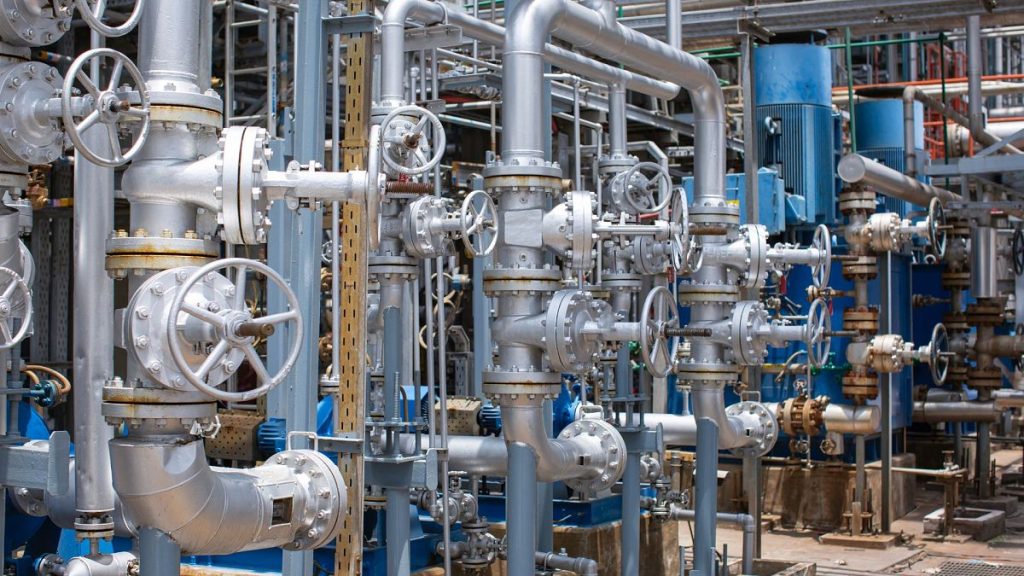The cessation of Russian gas flows through Ukraine on New Year’s Day 2024 sent ripples through the European energy market, triggering a surge in natural gas futures. The benchmark Dutch TTF price jumped over 4% to €51 per megawatt-hour, reaching its highest point since October 2023, before slightly retreating. This price spike was exacerbated by a confluence of factors, including freezing temperatures across Northern Europe, which increased demand, and the loss of the Ukrainian transit route, which represented approximately 5% of the EU’s natural gas imports. The closure of this long-standing pipeline, due to the expiration of a transit agreement, raised concerns about the accelerated depletion of European gas storage facilities and potential market volatility.
The sudden halt of Russian gas transit through Ukraine compounded the existing pressure on European gas reserves, which were already being depleted at the fastest rate since 2021. By mid-December, storage levels had fallen to around 75% capacity, a significant decline of approximately 19% from the end of the replenishment season in September. This rapid drawdown was primarily attributed to the unusually cold weather gripping Europe in the preceding weeks. While the EU maintains that there is no immediate threat of an energy crisis or significant consumer price hikes, the loss of the Ukrainian transit route introduces a new layer of vulnerability to market fluctuations, particularly given the already elevated gas prices, which have seen a year-on-year increase of 50%.
The European Union, while confident in its ability to navigate the immediate impact of the pipeline closure, acknowledges the potential for long-term challenges. The bloc’s reliance on alternative gas sources, coupled with the higher energy prices already burdening consumers and businesses, raises concerns about European competitiveness. The scramble to replace the lost Russian gas imports could further exacerbate the situation, particularly if the EU increases its reliance on liquefied natural gas (LNG), which often comes at a premium. This price pressure could ultimately translate into higher costs for households and hinder economic activity.
Central European countries, heavily reliant on the Ukrainian transit route, are particularly exposed to the disruption. While an alternative route, the TurkStream pipeline, exists for receiving Russian gas, its capacity is insufficient to fully compensate for the lost supply. Countries like Hungary and Slovakia, which depended on the Ukrainian pipeline for 65% of their gas demand in 2023, face the most significant challenges in securing alternative sources. This regional vulnerability underscores the broader concern about the EU’s ability to effectively manage its energy supply in the face of geopolitical shifts and supply disruptions.
To mitigate the impact and support affected member states, the European Commission has proposed several solutions. These include leveraging existing infrastructure to reroute gas supplies from Greece, Turkey, and Romania through the Trans-Balkan pipeline. This strategy aims to diversify supply sources and reduce reliance on any single transit route. However, the feasibility and cost-effectiveness of these alternatives remain uncertain, adding to the complex equation of balancing energy security with economic stability.
While the immediate outlook doesn’t indicate a full-blown energy crisis for the EU this winter, the long-term repercussions of the pipeline closure are more concerning. Refilling depleted gas storage facilities in the coming months is expected to be more expensive than anticipated. The surge in gas prices for the summer of 2024, exceeding even those projected for the winter of 2025-26, signals a challenging replenishment season ahead. This increased cost, coupled with the reduced storage levels at the end of winter, poses a significant financial burden and adds another layer of uncertainty to the European energy landscape. The confluence of these factors underscores the fragility of the European energy market and highlights the need for long-term strategies to diversify supply and ensure energy security.














